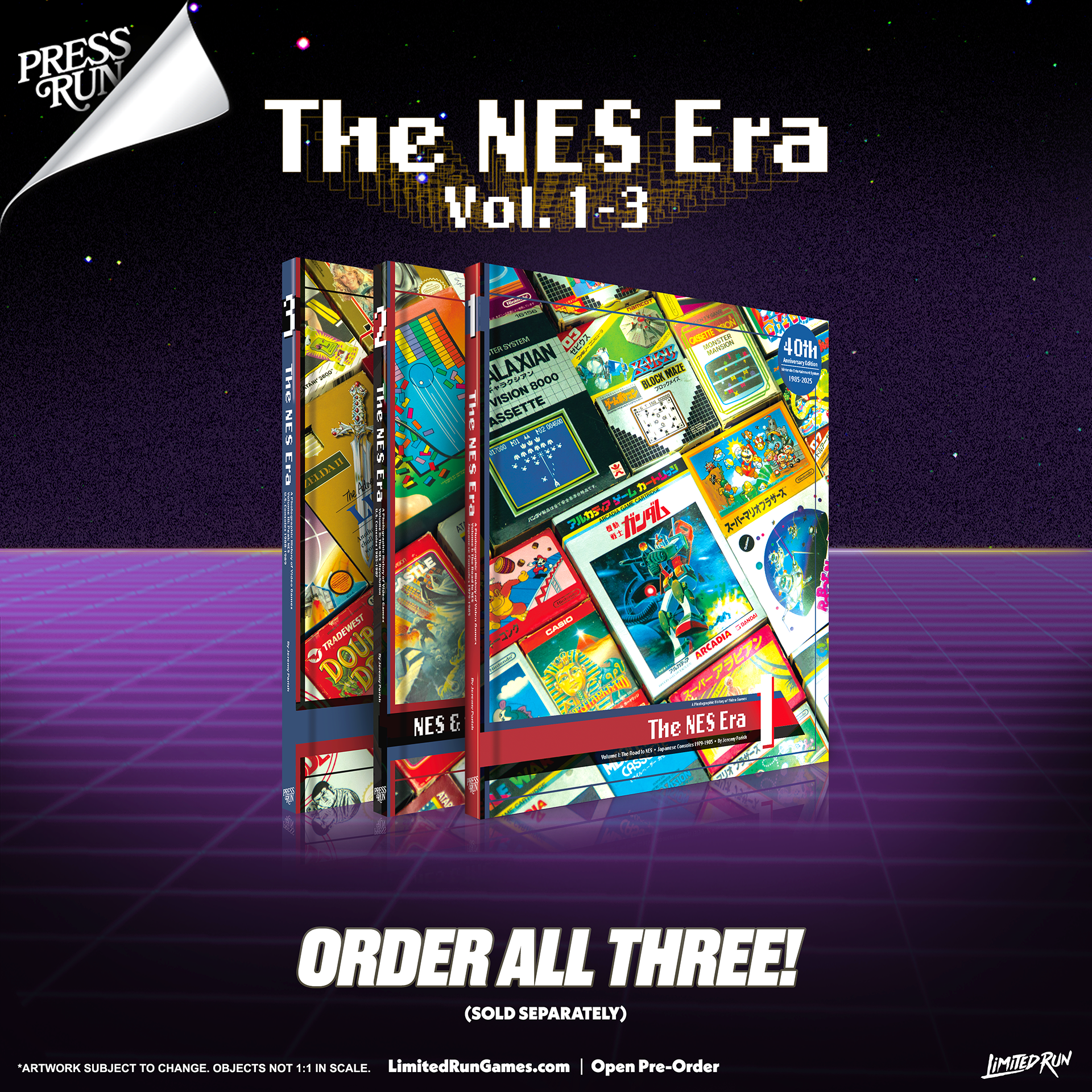Product Details
The NES Era Vol. 1 The Road to NES • Japanese Game Consoles 1979-1985 By Jeremy Parish.

Features:
- Hardcover
- Full color
- English language text
- 12x12”
- 256 pages
Covers more than 200 games from Nintendo, Sega, Casio, Epoch, and more. A comprehensive photographic atlas of the earliest days of Japanese consoles!
PLEASE NOTE: There is no purchase limit on this item. This item is currently in manufacturing and artwork is subject to change.
More information
Celebrate the 40th anniversary of the Nintendo Entertainment System with this massive, oversized hardcover coffee table book! Explore the rise of Nintendo’s first console before it became the NES with this collection of photos and screenshots. Where did the NES that we know and love come from? It’s all detailed here. The NES Era Vol. 1 also documents the competitors that Nintendo faced off against, charting the history of all Japanese console games from 1979 leading up to the American NES launch in October 1985.
Before it became the Nintendo Entertainment System, Nintendo’s first console was known as Famicom and became a massive, industry-changing hit in Japan. But Famicom wasn’t the only system out there making a bid for family TV time…. Take a look back to the early 1980s to chart not only the beginnings of Nintendo’s rise to power in the console space, but also the works of the other game makers whose systems challenged Famicom.
Laying the Groundwork for NES!
A photo atlas featuring more than 60 Famicom games, from Donkey Kong and Popeye to Super Mario Bros. and City Connection! Discover which games made their way to America, and which remained stranded in Japan—and why! Celebrate these classics with larger-than-life photos of their vibrant boxes and direct-feed screenshots!
The Challengers to the Throne!
Also includes complete photo documentation of the game libraries for every other console created for the Japanese market during the Famicom’s early days—and even before. This is the first time these games have been collected together in a print publication anywhere:
- Bandai SuperVision 8000
- Epoch Cassette Vision
- Tomy Pyuta Jr.
- Bandai Arcadia
- Sega SG-1000
- Gakken TV Boy
- Casio PV-1000
- Othello Multivision
- Epoch Super Cassette Vision
- Epoch Game Pocket Computer
- Sega Mark III
Video Game History Like You’ve Never Seen It Before!
The NES Era Vol. I features high-quality original photography of the box art for more than 200 different games, as well as reference screenshots taken directly from original hardware when possible. The 12x12” format means that nearly all of these boxes appear at larger-than-life sizes to capture the detailed art and vibrant design work that caught kids’ eyes in toy stores 40 years ago. You may know the history of NES, but you’ve never seen it like this before.







